Last updated on March 14, 2024
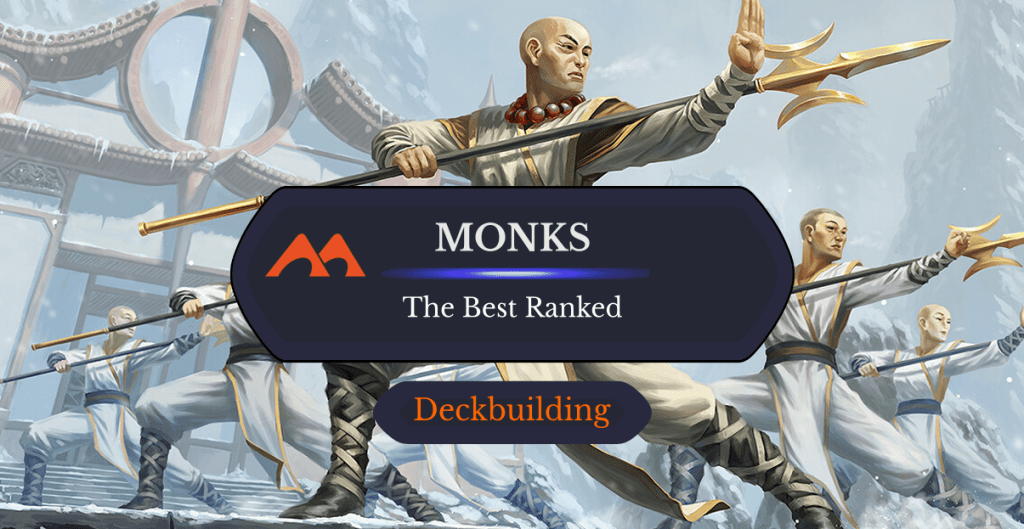
Monastery Mentor | Illustration by Brian Valeza
Monks in MTG take inspiration from people that devote their lives to perfecting themselves via martial arts or arcane knowledge, usually via the prowess mechanic. Most of them can get evasion (now you see me, and now you don’t) and can raise their power and toughness suddenly and very quickly.
If you enjoy tempo decks and surprising your opponents, monks may be your cup of tea. So let’s rank the best monks, and if you’re looking into creatures that get better in spellslinger decks, I strongly suggest checking them out!
Let’s jump in!
What are Monks in MTG?
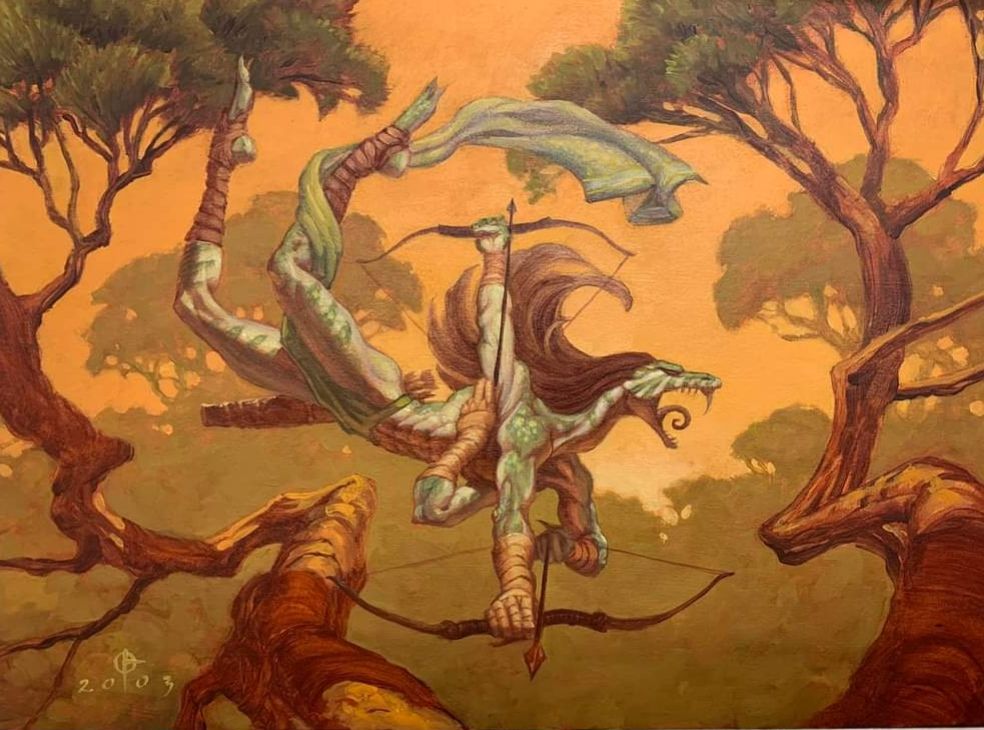
Seshiro the Anointed | Illustration by Daren Bader
Monks are one of the main creature types in MTG. Since monks have appeared only on specific planes, like members of the Ojutai clan in Tarkir, they have a very clear mechanic connection. Monks are tricky and oppose brute force, opting for subtlety.
Monks rely on combat mechanics and intelligence, and in MTG that’s often related to combat abilities, combat keywords, and mechanically connected to noncreature spells. Monks are often white and blue, representing intelligence and discipline, with the occasional red and green for aggressiveness and growth.
#26. Lone Missionary
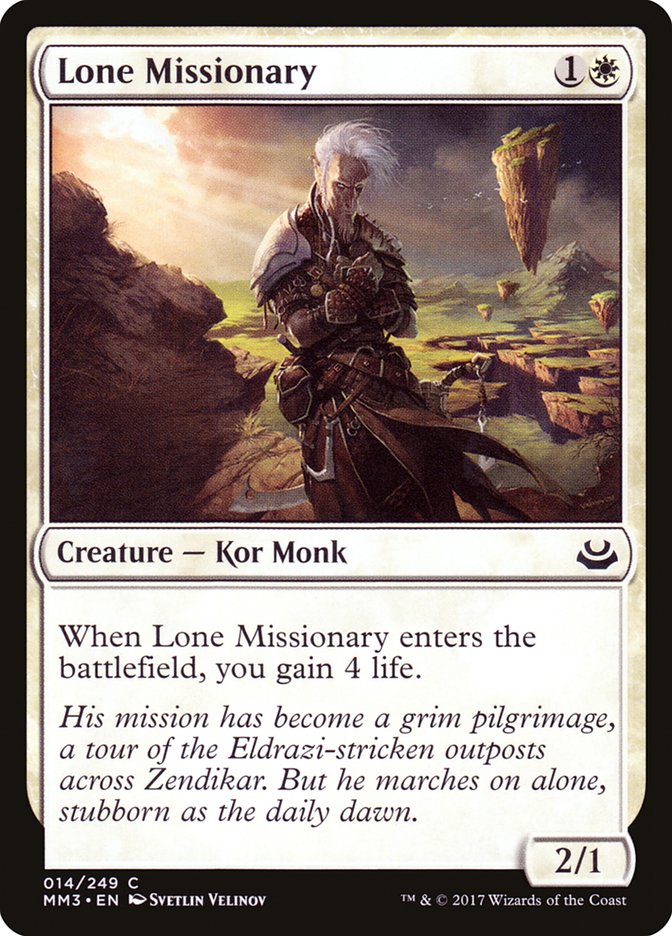
Lone Missionary is a staple of Pauper formats and lifegain-based decks. If your meta is too aggressive or your deck cares about gaining some life, blinking a few Lone Missionary should do the trick.
#25. Geist-Honored Monk
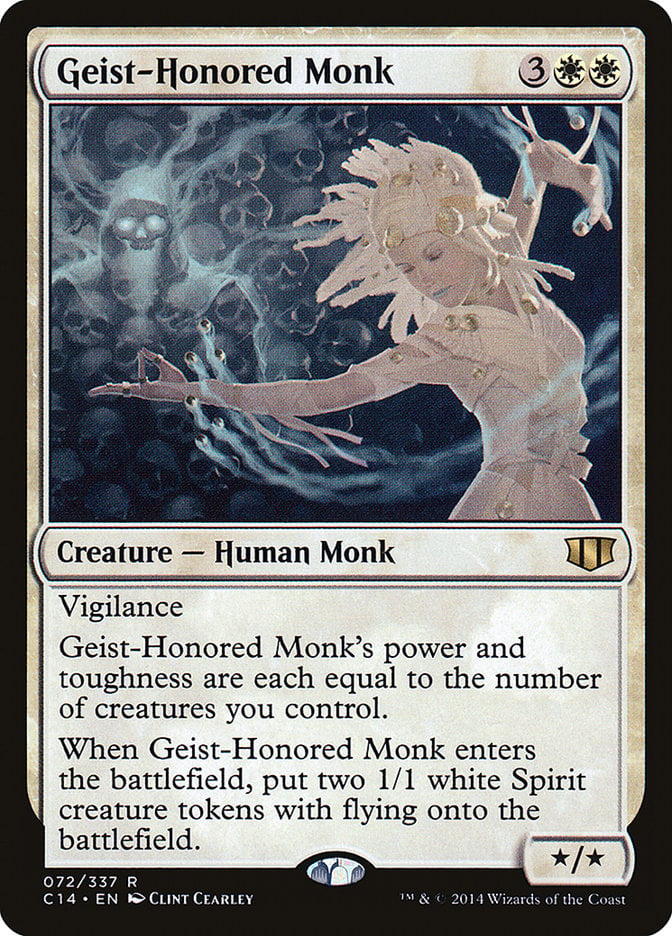
Geist-Honored Monk is an army on a card, and it cares about going wide while generating a few flying tokens itself. It’s a nice card to include in token decks or decks that go wide, but considering the recent power creep in MTG cards, I wouldn’t be surprised if it gets reprinted as an uncommon sometime soon.
#24. Seshiro the Anointed
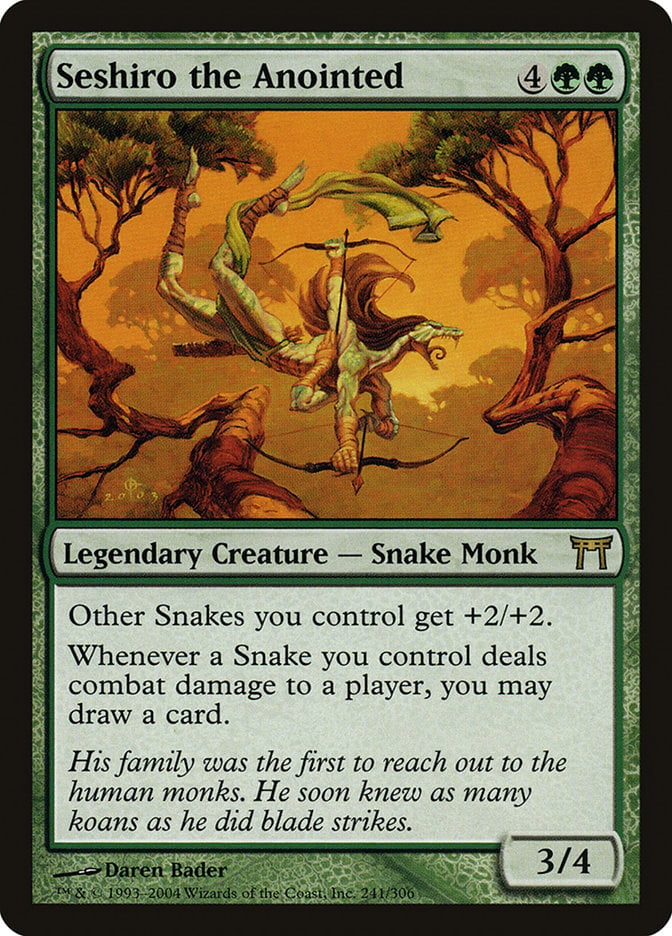
It’s hard to see lords give +2/+2 to a certain creature tribe, but here it is. Seshiro the Anointed is one of the best snake lords out there. Seshiro also gives snakes the ability to draw cards when they hit players, but it’s a 6-drop commander. It’s usually played in Commander decks like Hapatra, Vizier of Poisons that make a few snakes along the way to buff your snakes and give you some card draw.
#23. Avacyn’s Pilgrim
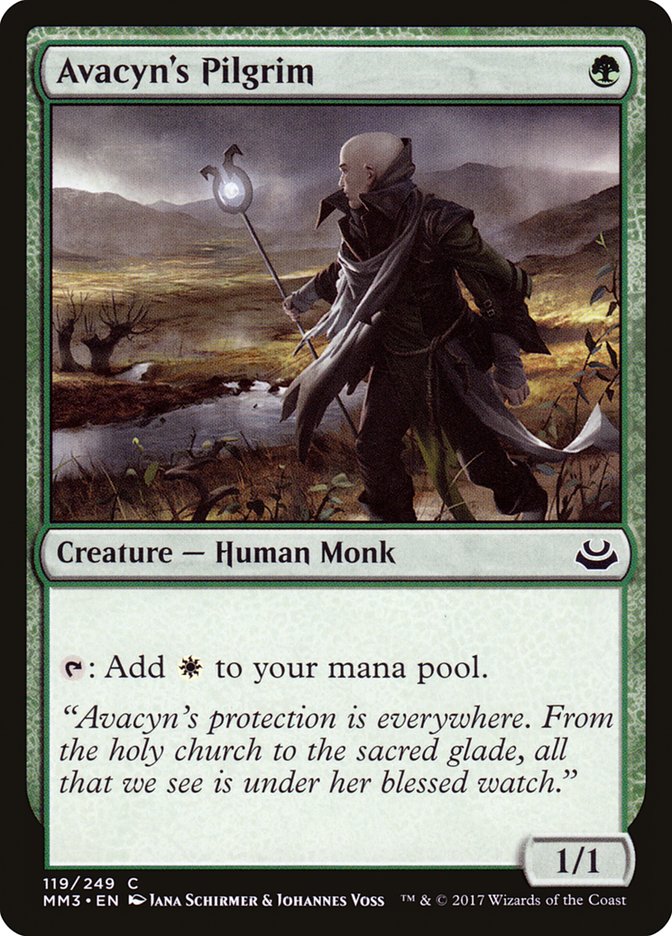
The quintessential mana dork, Avacyn's Pilgrim differs from Llanowar Elves in the sense that it’s not an elf and that it generates white mana. It's better in decks than in mono-green ones, that’s for sure. Its main function is to serve as ramp in human decks or when you need an extra mana dork in singleton formats.
#22. Tadeas, Juniper Ascendant

Tadeas, Juniper Ascendant is a reach lord, giving them pseudo-vigilance, unblockability, and giving your creatures a card draw ability when they hit. Tadeas fits spider EDH decks nicely since many of them have reach, or decks that have a toughness-matters theme.
#21. Shu Yun, the Silent Tempest

Although a somewhat older creature, Shu Yun, the Silent Tempest can be a competent Voltron commander. You can fill your deck with instants or sorceries that give it unblockable, and its own ability even gives it double strike. It’s a sure inclusion in prowess-oriented decks that like to mess with combat.
#20. Soulfire Grand Master
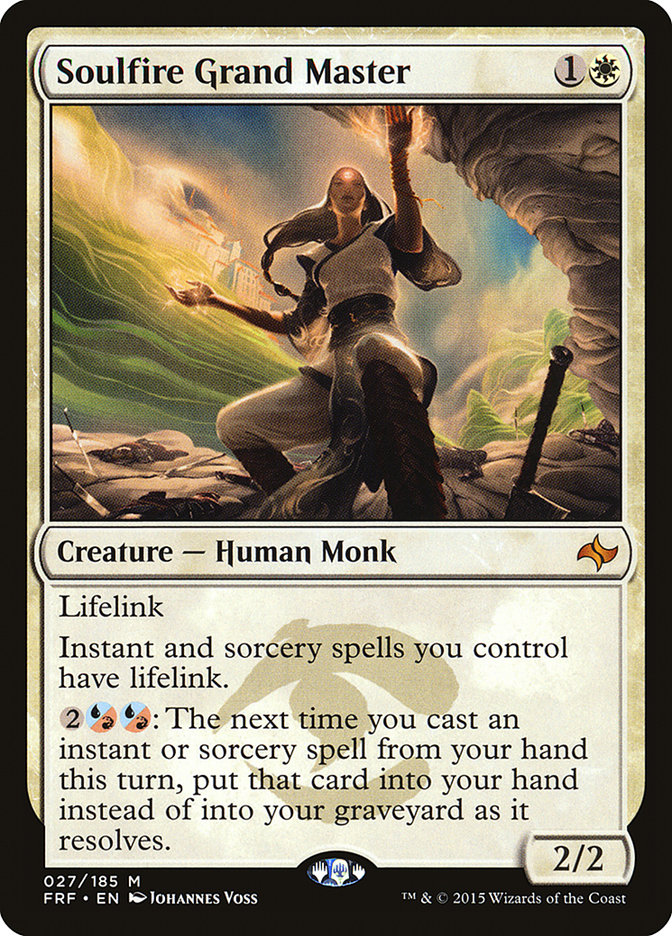
Soulfire Grand Master has a few things going on. First, it’s a 2/2 with lifelink that gives lifelink to your spells. If you’re playing against a mono-red aggro player, your Lightning Bolt becomes Lightning Helix! Also, you can buyback your own spells by paying an extra 4 mana. In Standard it was better used as a control deck sideboard creature to be played once adversaries took out their removal.
#19. Rune-Tail, Kitsune Ascendant
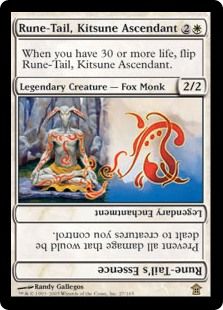
Rune-Tail, Kitsune Ascendant, like Serra Ascendant, is a card that benefits from the Commander format. You’ll frequently be able to cast it and flip the same turn, and once you do that, you’ll prevent all damage dealt to your creatures. That’s a nice combo with cards like Pariah that let your creatures take damage meant for you.
#18. Stratus Dancer
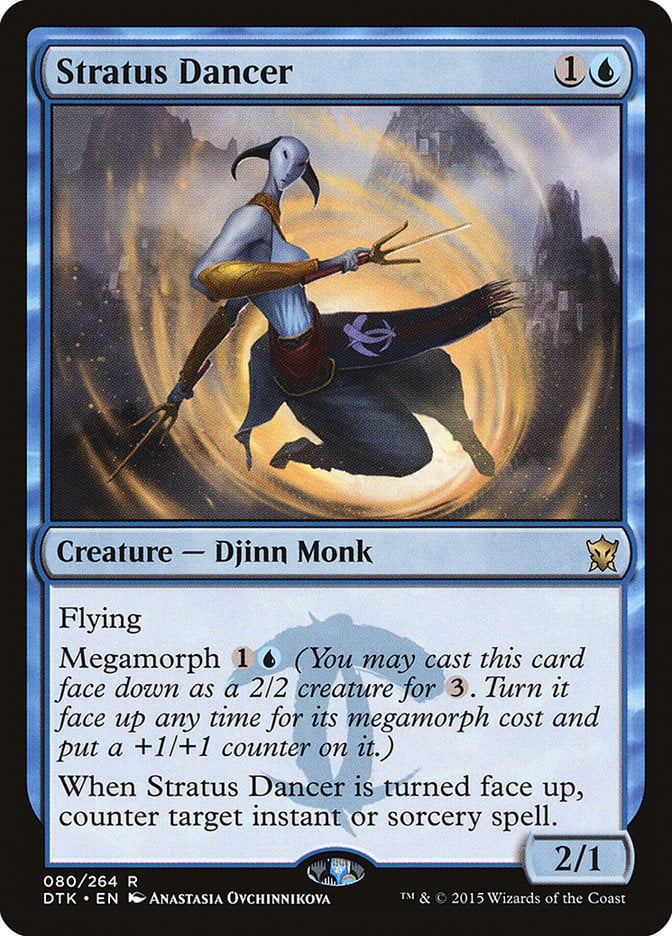
Stratus Dancer is a nice evasive creature that saw plenty of Standard play at its time, and it has synergies in morph decks too. A 2/1 flier for 2 mana has already a good rate to see play, and in the late game you can have a counterspell on the board.
#17. Ojutai Exemplars

Ojutai Exemplars is a tempo card that suffers from the Doom Blade syndrome or the “4-drop without an ETB” syndrome. Once you can untap with it, you’ll have a strong presence on the board, gain some life, and even protect the Exemplars from removal. Still, it’s one of the better and more flexible 4-drops you can play in decks filled with noncreature spells, and you can use it to manipulate combat in your favor and gain some life.
#16. Abbot of Keral Keep
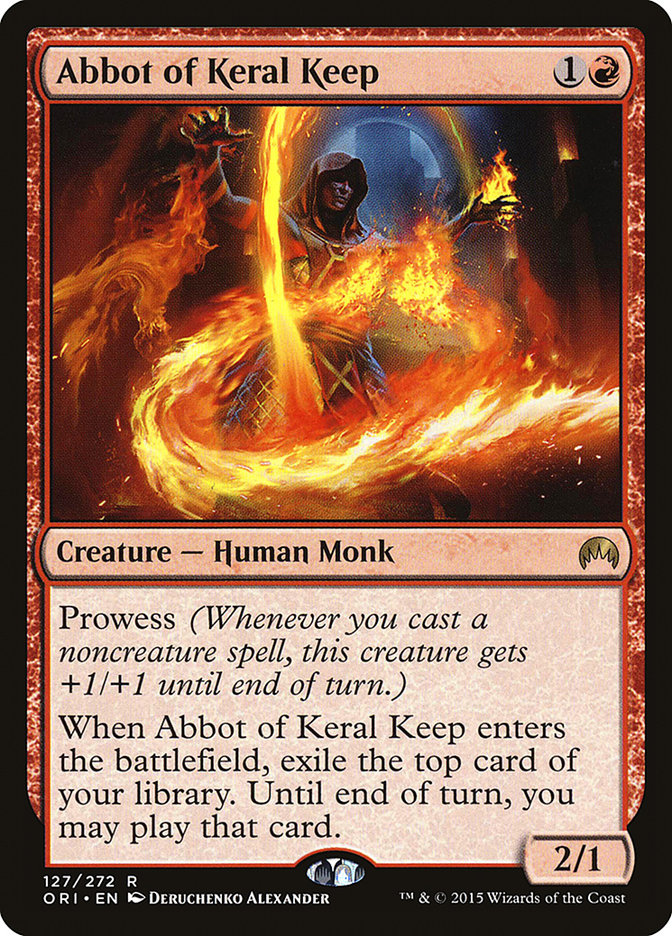
Abbot of Keral Keep is a good addition to an aggressive deck since it has prowess and an impulse-draw ability. It’s a reliable 2-drop early and late, and it sees some Pioneer play here and there. Cube decks looking to make a red aggressive deck have better options and usually play the Abbot for consistency.
#15. Taigam, Ojutai Master
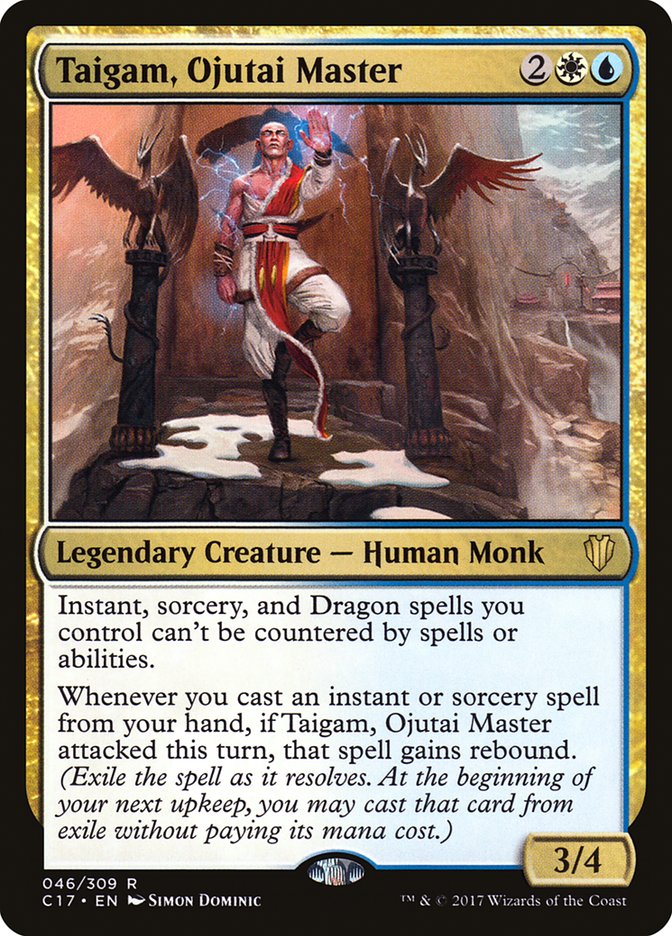
With Taigam, Ojutai Master, you’ll pay for a spell once but get to cast it twice thanks to rebound. It needs to attack though, so consider giving Taigam protection or unblockable. Cards like See the Truth get better when you’re casting them from exile, and cards like Approach of the Second Sun can outright win you the game. Taigam works wonders with an array of prowess creatures simply because you’ll be casting a lot of instants and sorceries in turn buffing your creatures along the way.
#14. Elsha of the Infinite
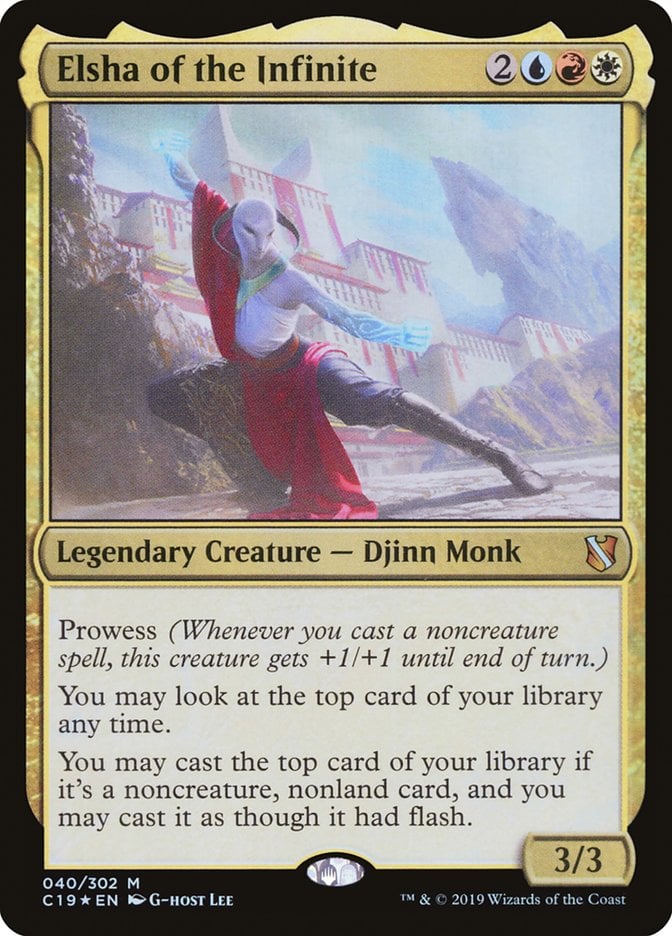
Elsha of the Infinite gives you so much card advantage by letting you play the top card of your library if it’s a noncreature spell. There are loads of ways in blue to shuffle your library or scry, and Eisha has prowess. If you can untap with it and cast a bunch of spells, you’ll have a massive turn. Filling your deck with prowess creatures is the way to go here, and what’s more, the spells can be cast with flash, so you’ll have more flexibility and surprise adversaries more often.
#13. Rhox Faithmender
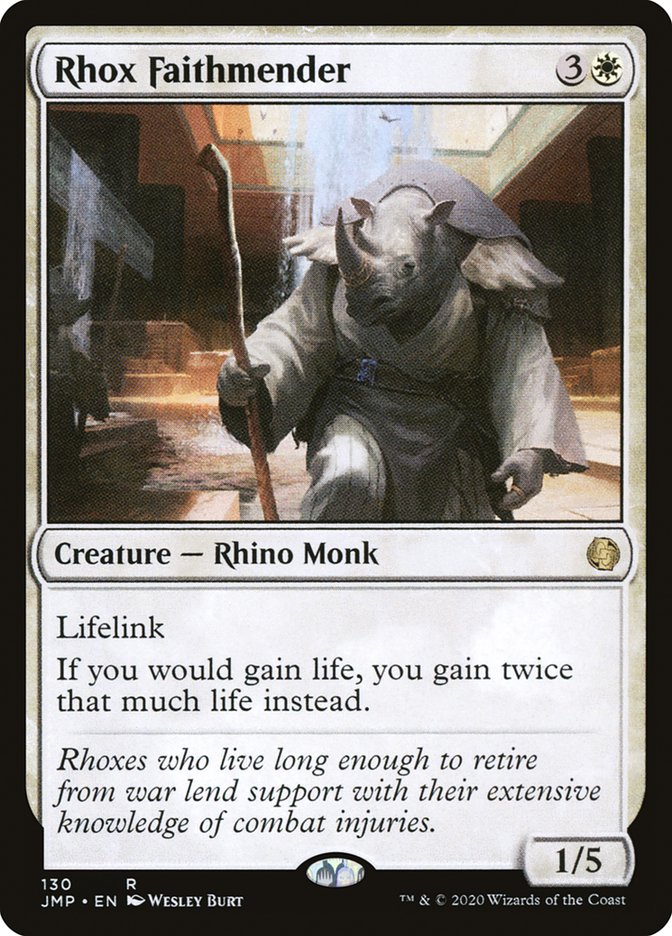
Nothing shines more in the eyes of a lifegain player than the prospect of doubling the amount of life gained. Rhox Faithmender has a nice defensive body, can turbo lifegain engines, and makes extort triggers more powerful. It’s devastating once cards like Sanguine Bond hit play.
#12. Oji, the Exquisite Blade

Oji, the Exquisite Blade can be a blink commander or a blink piece in a Commander deck like Brago, King Eternal. Monks in the D&D: Adventures in the Forgotten Realms sets incentivize you to play two spells in a turn and have some lifegain synergies, so Oji fits this two categories.
#11. Third Path Iconoclast
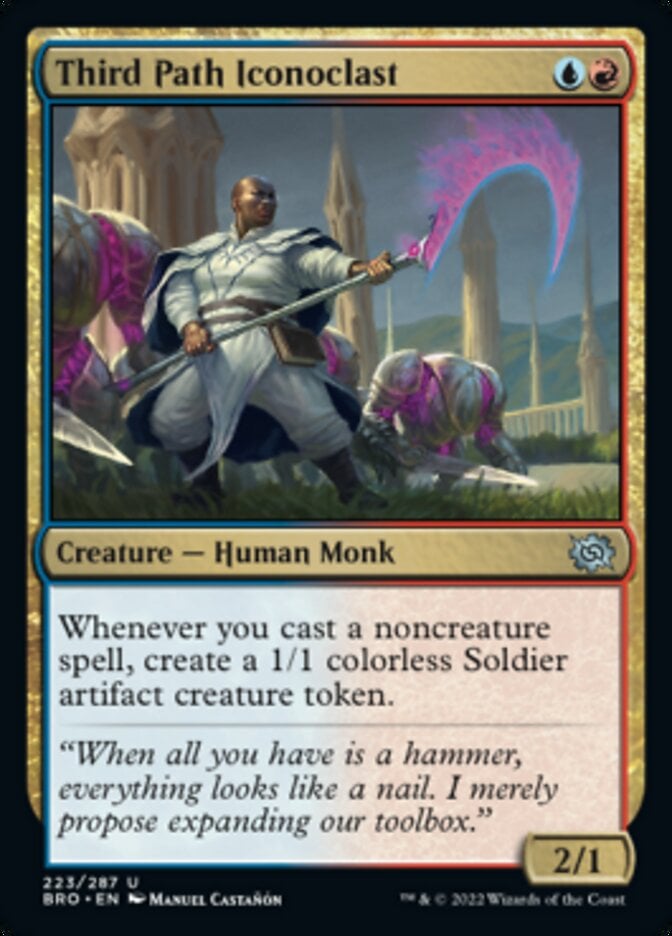
Fans of Young Pyromancer got another toy in Third Path Iconoclast. Making a 1/1 token is a good incentive to cast cheap spells, and in Standard you have some redundancy in Monastery Mentor. The Iconoclast has seen some play in or Standard spellslinger decks, and the fact that it makes artifact tokens gives players more flexibility in deckbuilding, combining these tokens with Urza, Prince of Kroog or mechanics like affinity and improvise.
#10. Narset, Enlightened Exile
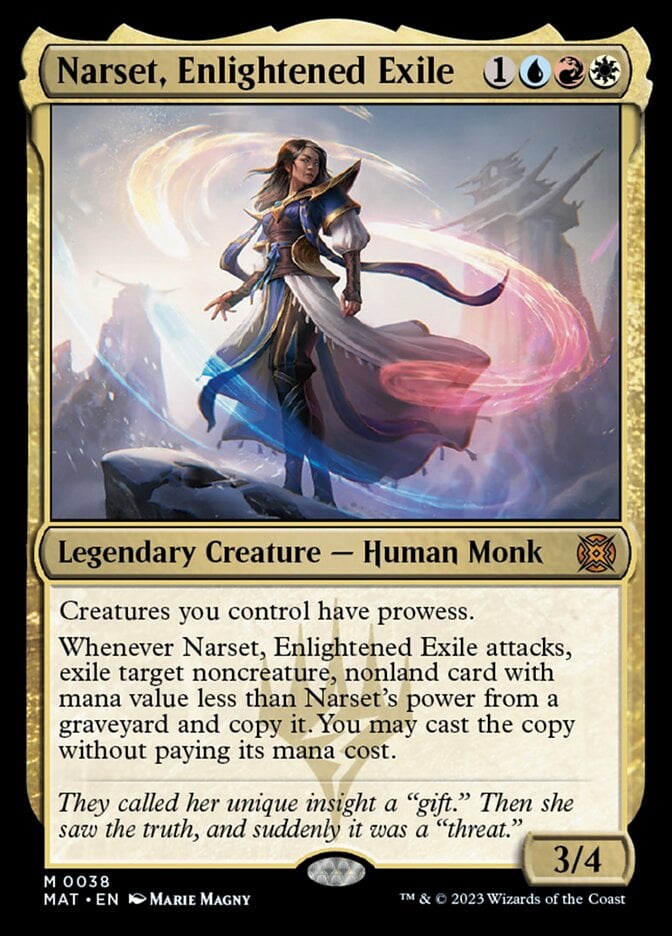
Considering that noncreature spells and prowess are what tie monks together as a creature type, Narset, Enlightened Exile can be considered a monk lord. In a spellslinger deck, Narset can buff your creatures mid-combat, and it’s a nice pairing with many of the top creatures in this list. It’s important to note that prowess stacks, so if your creatures already have prowess, Narset gives them an extra instance. It sees some play in Standard and Commander decks that go wide with creatures.
#9. Ishai, Ojutai Dragonspeaker
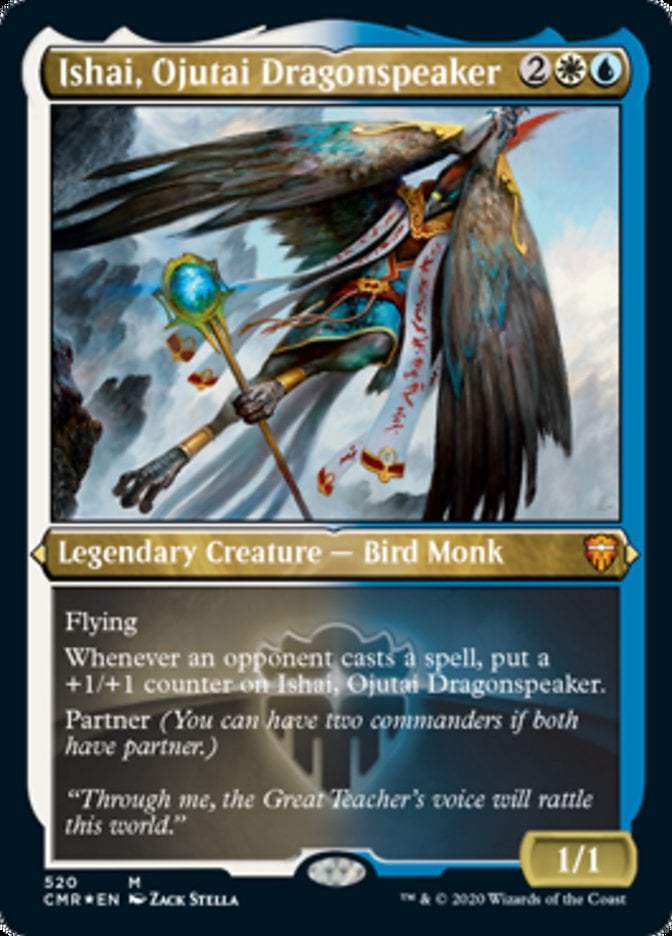
Ishai, Ojutai Dragonspeaker is a creature that gets big eventually, because if there’s a thing that opponents certainly do in an EDH game, it’s casting spells. Thanks to the partner mechanic, there are lots of Ishai deck combinations, be it with Jeska, Thrice Reborn or Reyhan, Last of the Abzan. Ishai, Ojutai Dragonspeaker can be built as a commander in a lot of interesting ways, like flying matters, counters, or Voltron.
#8. Narset, Enlightened Master

Narset, Enlightened Master is a commander known to cast expensive noncreature spells. It has a fragile body as a 6-drop to attack constantly, so you’ll probably have to suit this commander up with some auras or equipment. One popular build for this EDH deck is to fill it with extra turn spells like Time Warp or Temporal Trespass, so you’ll attack, take an extra turn, and repeat this. Red extra attack steps also work.
#7. Serra Ascendant
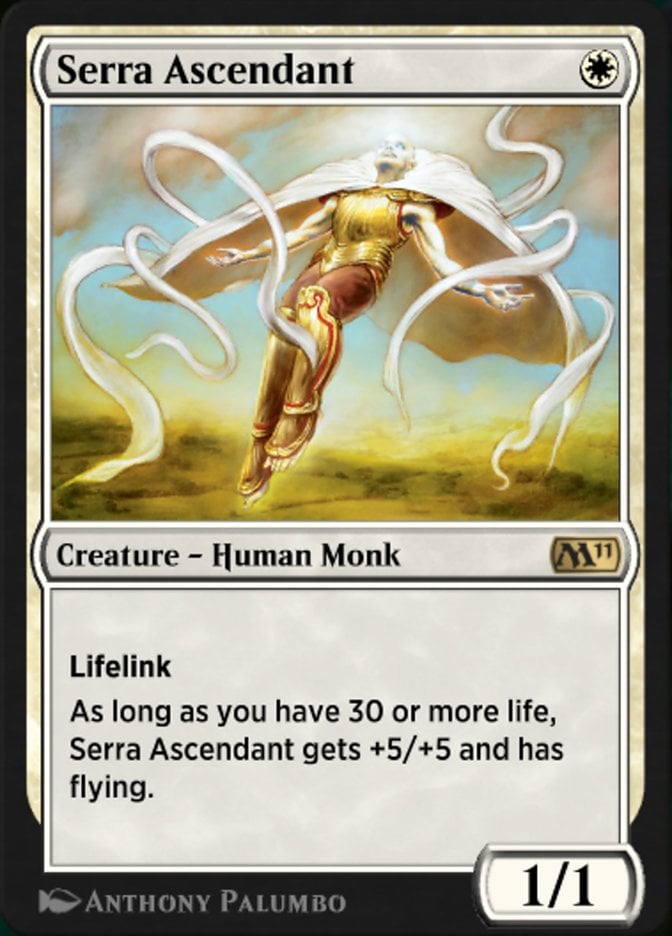
Serra Ascendant is a staple in decks that benefit from lifegain, since the difference between a 1/1 and a 6/6 flying creature is huge. What’s more, it’s a condition automatically met in EDH, at least in the first few rounds. Modern decks like Soul Sisters can gain life fast enough to get from 20 to 30 life and turn Serra Ascendant on too. This card is a 1-drop that can be as huge as a dragon or angel, so it’s worth checking out.
#6. Jukai Naturalist
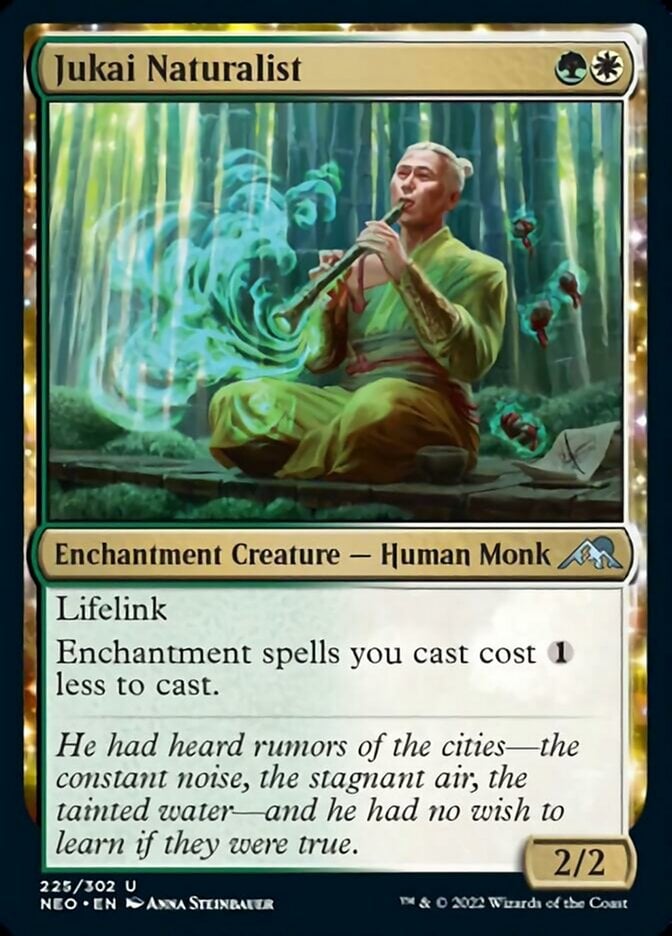
Here’s a nice enchantment engine that sees play in Standard and EDH enchantress decks. Jukai Naturalist can cut a mana from all enchantments you play, and that usually leads to explosive turns, especially when you have lots of enchantments that draw cards like Spirited Companion or Omen of the Sea. This is a threat that usually needs to be killed on the spot, and it gets silly in multiples.
#5. Azusa, Lost but Seeking
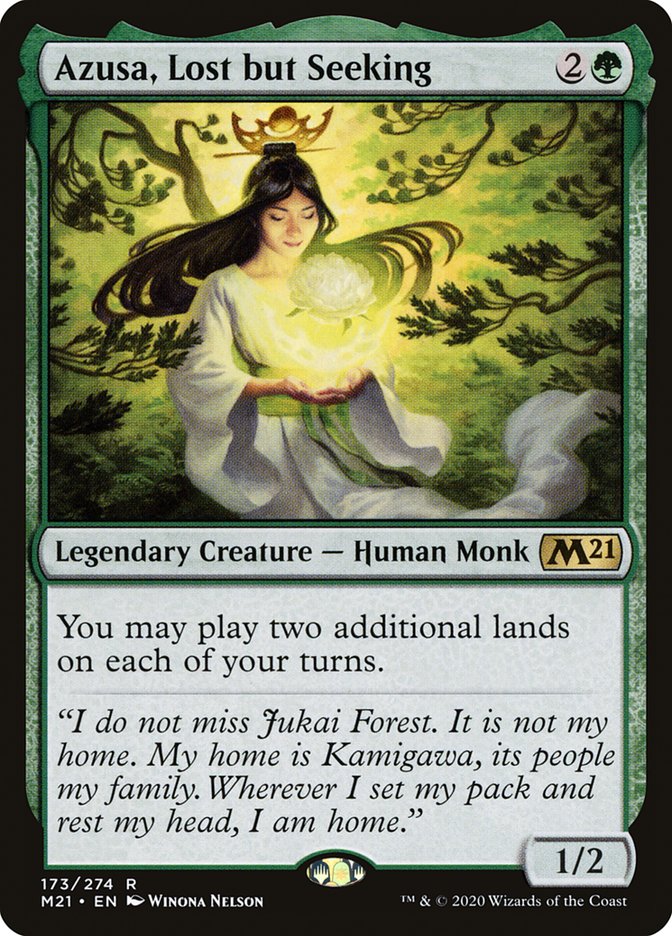
Playing an additional land each turn is nice, but what about two? Azusa, Lost but Seeking is a popular green commander, exploiting ramp synergies, big creatures, and it sees play in Modern decks like Amulet Titan. Azusa combines nicely with card draw, cards that let you play lands from your graveyard, landfall, and of course, gigantic green creatures or Eldrazi.
#4. Zedruu the Greathearted
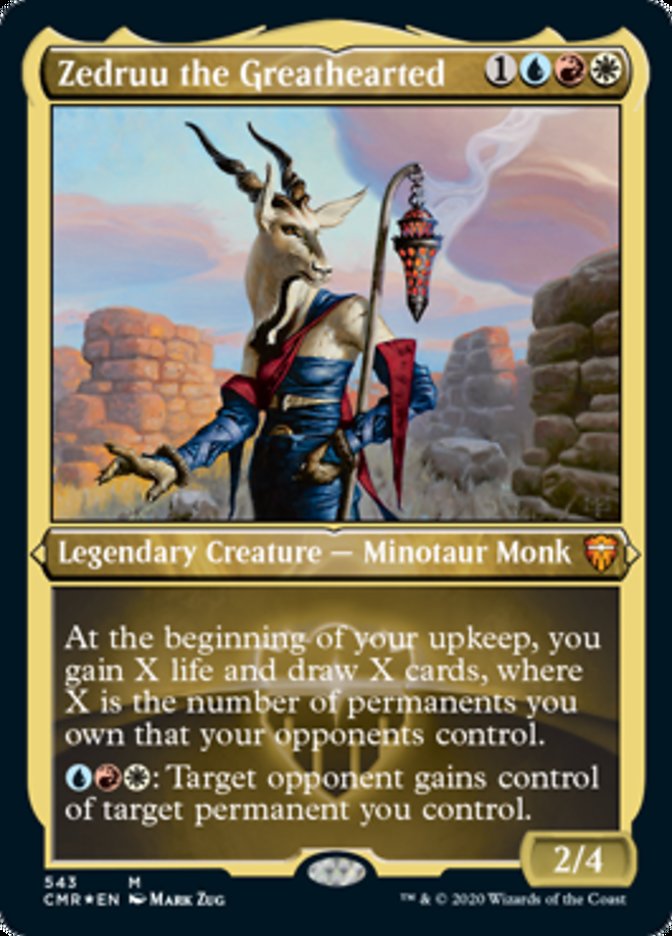
Zedruu the Greathearted is a famous group hug commander, one that excels at giving gifts to your opponents and benefiting from it. You’ll give good cards to opponents to form alliances, and while they control your permanents, you’ll draw extra cards and gain some life. You can also exchange control or permanents. They get your boing permanents while you get their best one, or donated permanents will benefit everyone equally like Howling Mine. No matter which player controls it, everyone draws cards.
#3. Mantis Rider
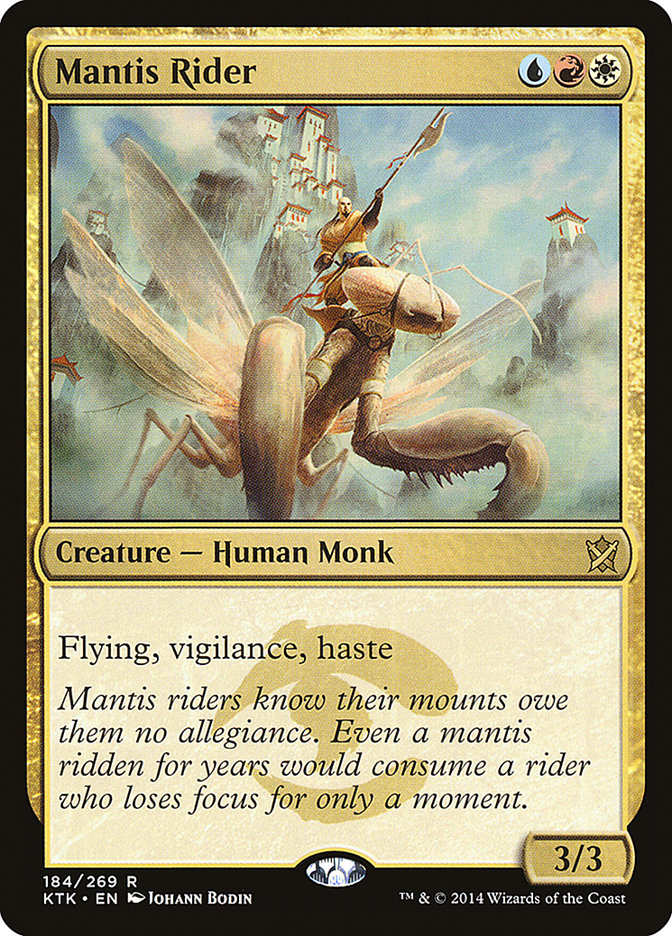
Mantis Rider is a very pushed card as a 3/3 with flying, vigilance, and haste. It was always a Standard staple, and it’s a human so it sees play in Modern/Pioneer human decks. Its mana value isn’t an issue since there are lots of lands like Cavern of Souls that generate “tribal mana.” You can see Mantis Rider in beatdown decks in EDH or decks that care about multicolor.
#2. Monastery Swiftspear
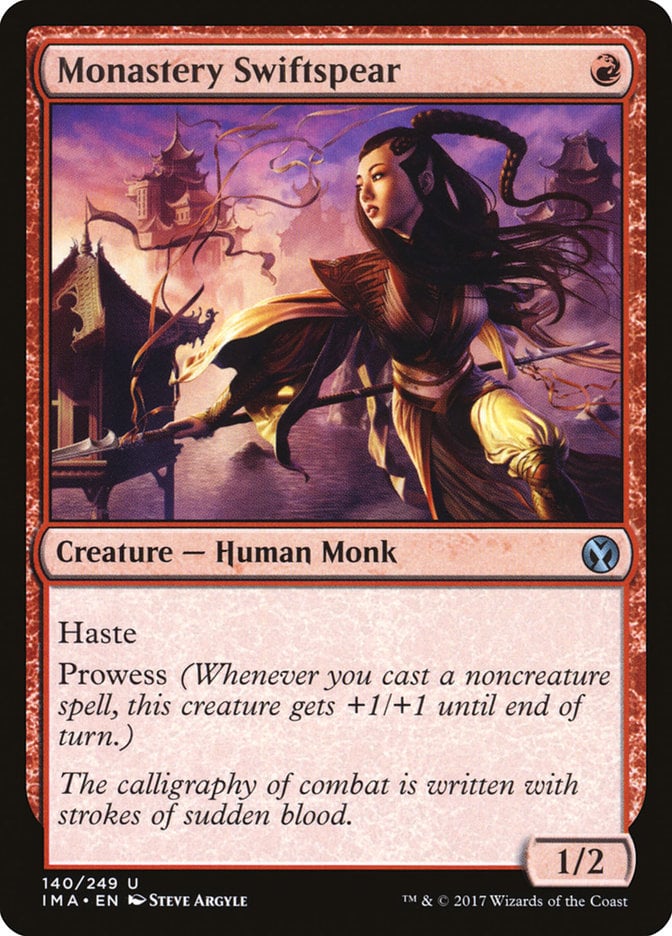
Monastery Swiftspear is one of the best red 1-drops out there. The combination of haste and being able to be more than a 1/2 thanks to prowess makes it a formidable threat at almost any point. You can play it in mono-red aggressive/burn decks across multiple formats, including Standard.
#1. Monastery Mentor
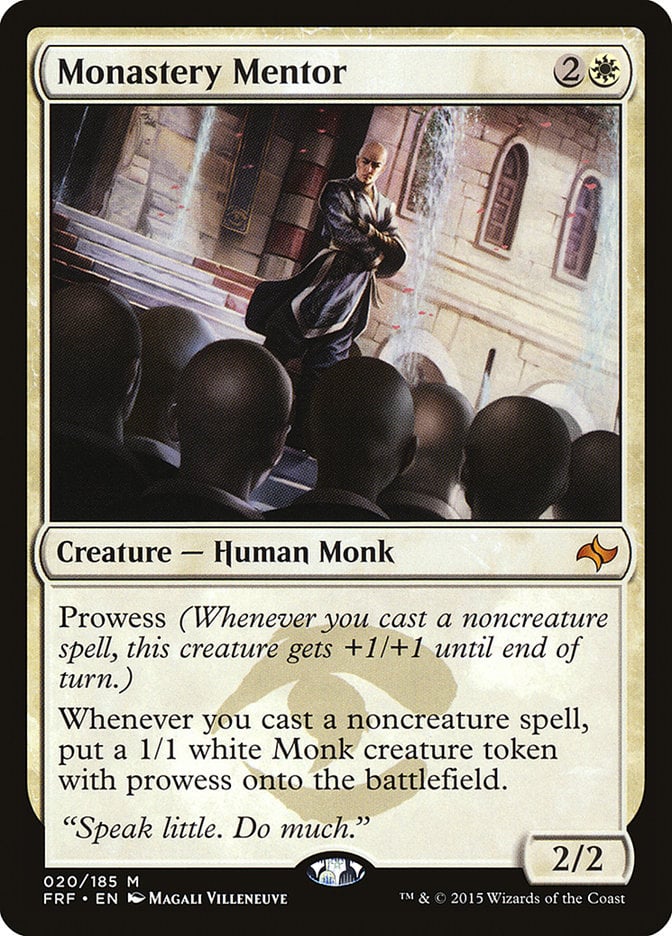
Monastery Mentor is an incredible win condition in formats like Legacy and Vintage where you can cast lots of spells for free, replacing old cards like Quirion Dryad in these decks. Not only can the mentor go tall, but it can also go wide. Turns out, making tokens with prowess is better than just making vanilla tokens like Young Pyromancer does.
Best Monk Payoffs
Surprisingly, there’s no clear monk payoff or monk lord in MTG. Eventually, we’ll have a legendary monk that says: “Other monks get +1/+1”, but in the meantime, let’s see some monk payoffs.
Prowess is the main mechanic theme that is common to monks. A monk deck usually wants lots of noncreature spells, preferably cheap instants and auras with flash to take advantage of the prowess mechanic.
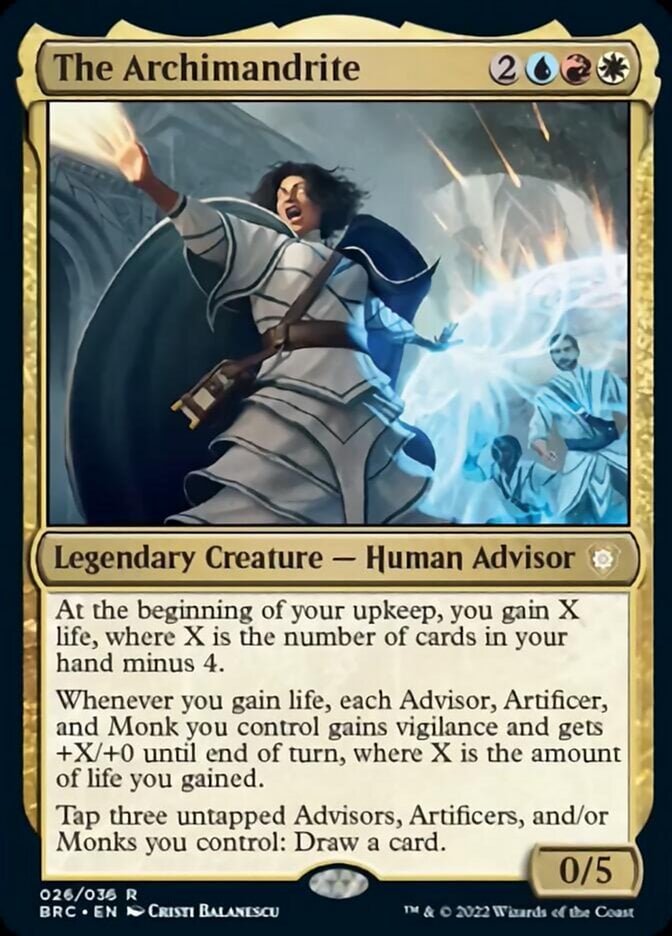
The Archimandrite is the main incentive for a monk tribal deck in EDH, allowing you to tap monks to draw a card and give them all +X/+0. You can use advisors and artificers in this deck too.
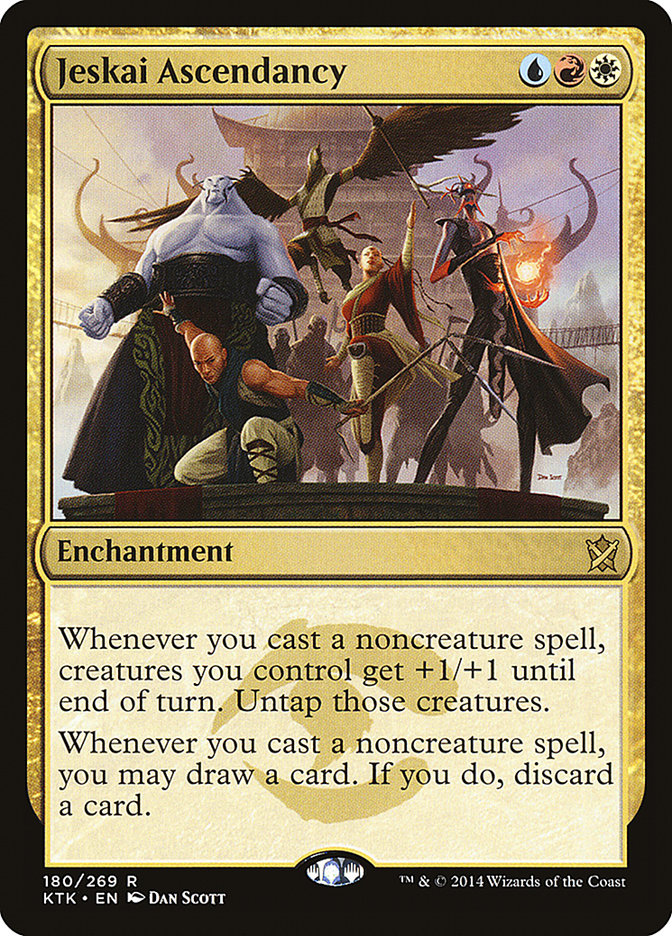
Jeskai Ascendancy was designed to work with prowess and to provide a huge flow of card selection and mana generation ability, and this combination leads to a storm combo engine. Considering that most monks benefit directly from noncreature spells being cast frequently, this card is tailor-made for this type of deck. It even gives pseudo-prowess to all your creatures.
There are also tons of typal-generic cards that can help your monks out, from Metallic Mimic to Adaptive Automaton or cards like Vanquisher's Banner.
Wrap Up
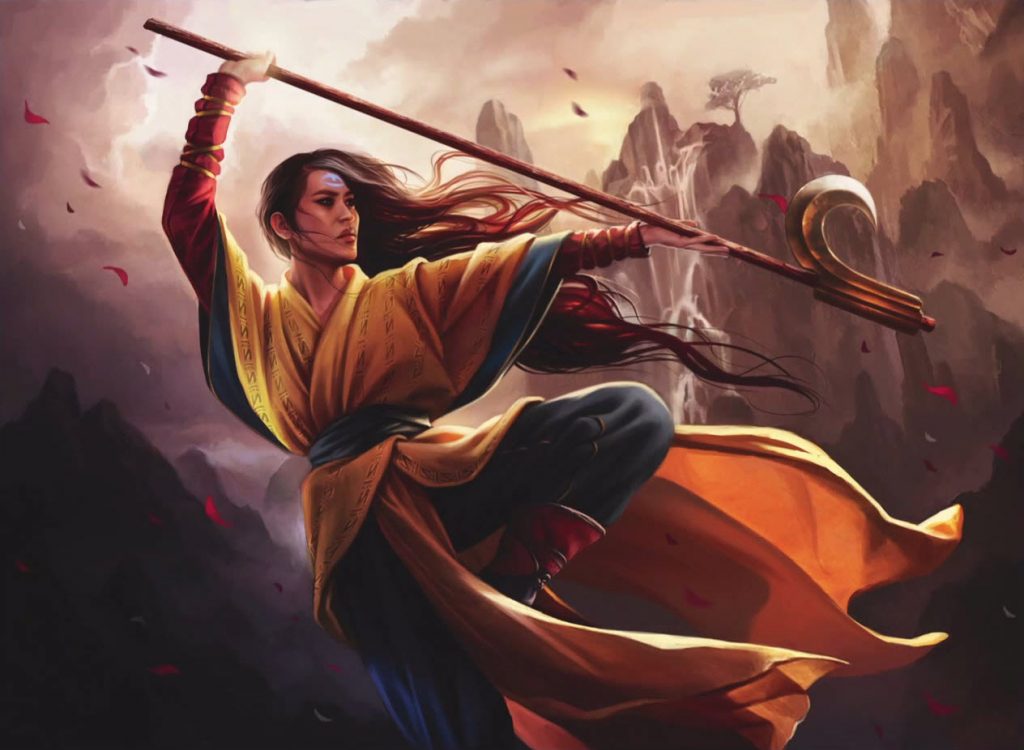
[card]Narset, Enlightened Master | Illustration by Magali Villeneuve
Monks don’t look like much from the outside, but they’re very powerful in MTG once they get supported by noncreature spells. These can range between instants, sorceries, and equipment, and flavorfully makes a lot of sense because they represent the monk’s training or knowledge. Mechanically, you’ll also buff your monk army by playing planeswalkers or even battles. The thing with monks is to strike at the right time with that big explosive turn, and when you can do that, it’s going to be legendary. Like tempo decks? Give monks a try.
What are your opinions on this monk list? Did any of your favorite monks didn’t make it? Let me know which ones in the comments section below, or let’s discuss them in the Draftsim Discord.
Anyways, thanks for reading, and stay safe out there folks!
Follow Draftsim for awesome articles and set updates: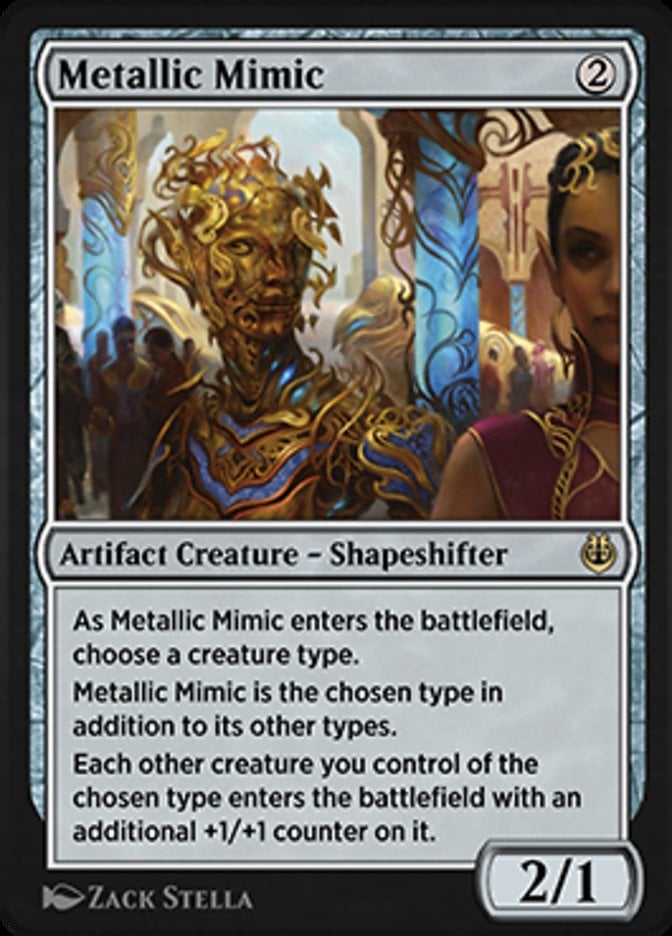
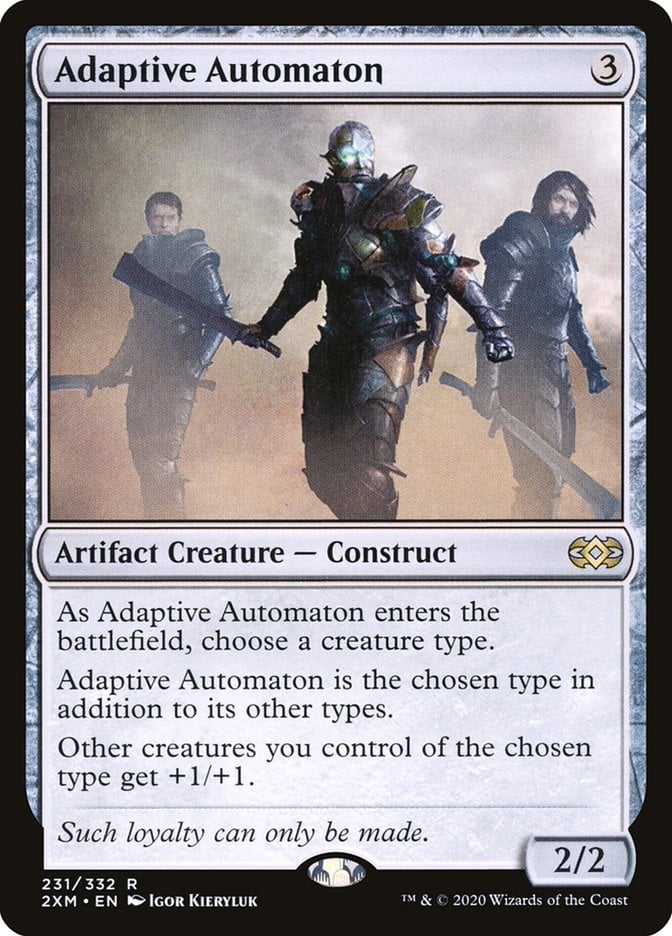


Add Comment